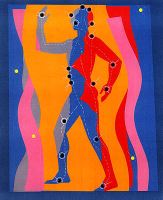 Â Researchers from Karolinska Institutet and Sabbatsbergs Hospital in Stockholm “argue that minimal acupuncture is not valid as an inert placebo-control.”
 Researchers from Karolinska Institutet and Sabbatsbergs Hospital in Stockholm “argue that minimal acupuncture is not valid as an inert placebo-control.”
It’s an ongoing issue among researchers, and confounds the results of many studies. For example, in a recent review of acupuncture to prevent migraine, the authors reported that acupuncture wasn’t better than sham acupuncture, but was about the same as proven prophylactic drug treatment.
During “true” acupuncture treatment in general, the needles are inserted into acupoints and stimulated until deqi (de Qi) is evoked — the connection between acupuncture needles and the energy pathways of the body.
In contrast, during placebo acupuncture, the needles are inserted into non-acupoints or inserted superficially (minimal acupuncture). A sham acupuncture needle with a blunt tip may be used in placebo acupuncture. Both minimal and placebo acupuncture with the sham acupuncture needle touching the skin activate afferent nerves in the skin and a “limbic touch response,” which results in emotional and hormonal reactions.
Clinical studies, say the authors, show that acupuncture and minimal acupuncture produce significant alleviation of migraine and are equally effective. In other conditions such as low back pain and knee osteoarthritis, acupuncture is more potent than minimal acupuncture and conventional non-acupuncture treatment.
The bottom line?
The authors believe, “It is probable that the responses to ‘true’ acupuncture and minimal acupuncture are dependent on the etiology of the pain. Furthermore, patients and healthy individuals may have different responses.
Regardless, “minimal acupuncture is not valid as an inert placebo-control.”
2/1/09 20:19 JR